Galleries
A Historic New York Gallery Is Turning Into a Nonprofit Research Institute Dedicated to Schiele, Grandma Moses, and Other Artists
The Kallir Research Institute is taking over operations for Galerie St. Etienne.
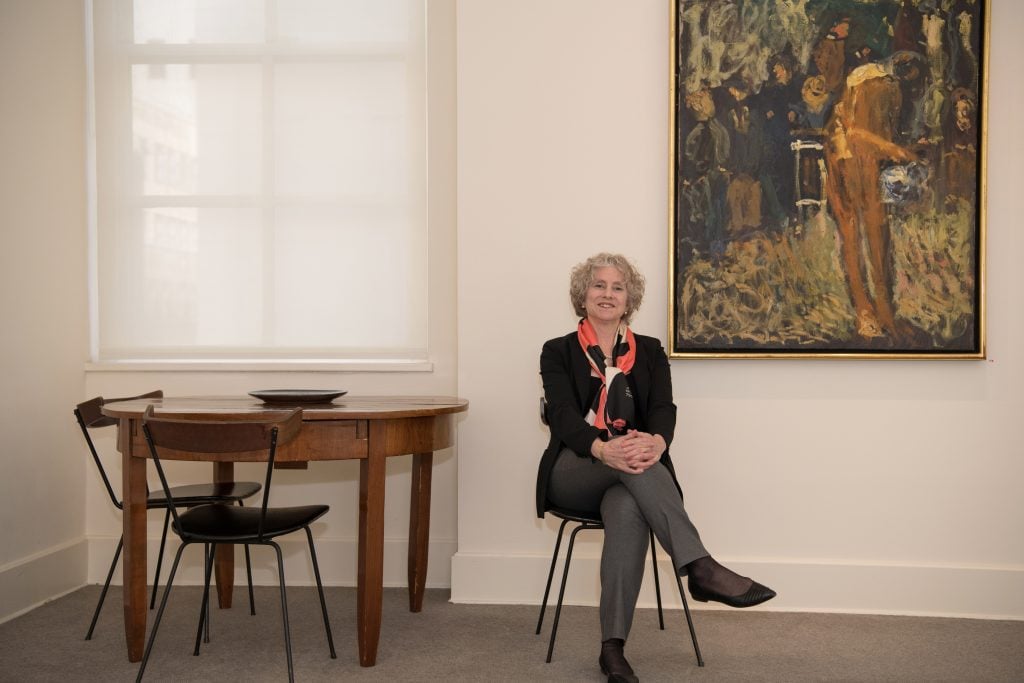
The Kallir Research Institute is taking over operations for Galerie St. Etienne.

Sarah Cascone

After more than 80 years in business, New York’s Galerie St. Etienne has closed its doors. But the space, a leading source of scholarship on the Austrian Expressionists and self-taught American folk artist Grandma Moses, has reinvented its operations as the Kallir Research Institute.
Jane Kallir, the granddaughter of the late art dealer Otto Kallir, who founded the gallery in 1939, announced plans to wind down its commercial activities in late 2019, having found that the dual business model of sales and scholarship was no longer tenable.
Now, the nonprofit foundation, established in 2017 to oversee Galerie St. Etienne’s work digitizing Egon Schiele’s catalogue raisonné, has taken over the gallery’s archives—some of which date back to the 1920s and ’30s, when Otto Kallir still lived in Austria—and will continue its research and other scholarly activities.
“I’m excited about being able to spend 100 percent of my working time doing things that I really love,” Kallir told Artnet News.
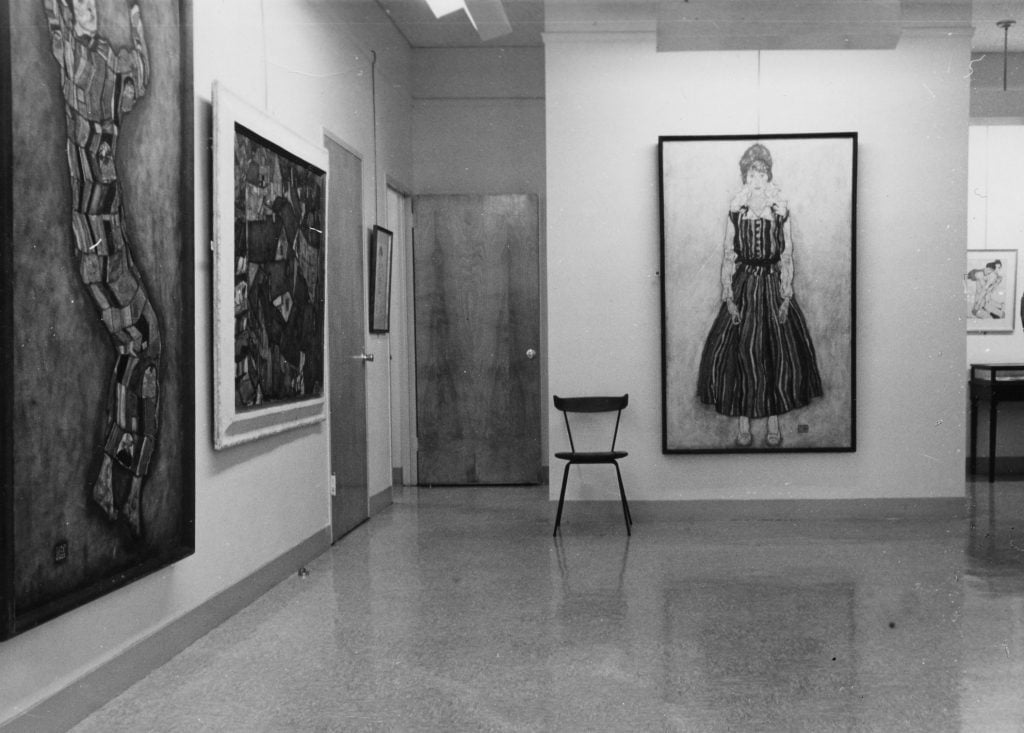
An Egon Schiele exhibition at Galerie St. Etienne in 1960. Photo courtesy of the Kallir Research Institute.
The foundation will work closely with institutions organizing exhibitions with the artists who have long been associated with Galerie St. Etienne, such as Schiele, Moses, John Kane, Gustav Klimt, Oskar Kokoschka, Käthe Kollwitz, and Paula Modersohn-Becker.
A Schiele show is in the works at the Belvedere Museum in Vienna, and a traveling Moses exhibition is being organized by the Smithsonian American Art Museum in Washington, DC, which is establishing a Grandma Moses Study Center on the strength of 10 paintings donated by Kallir.
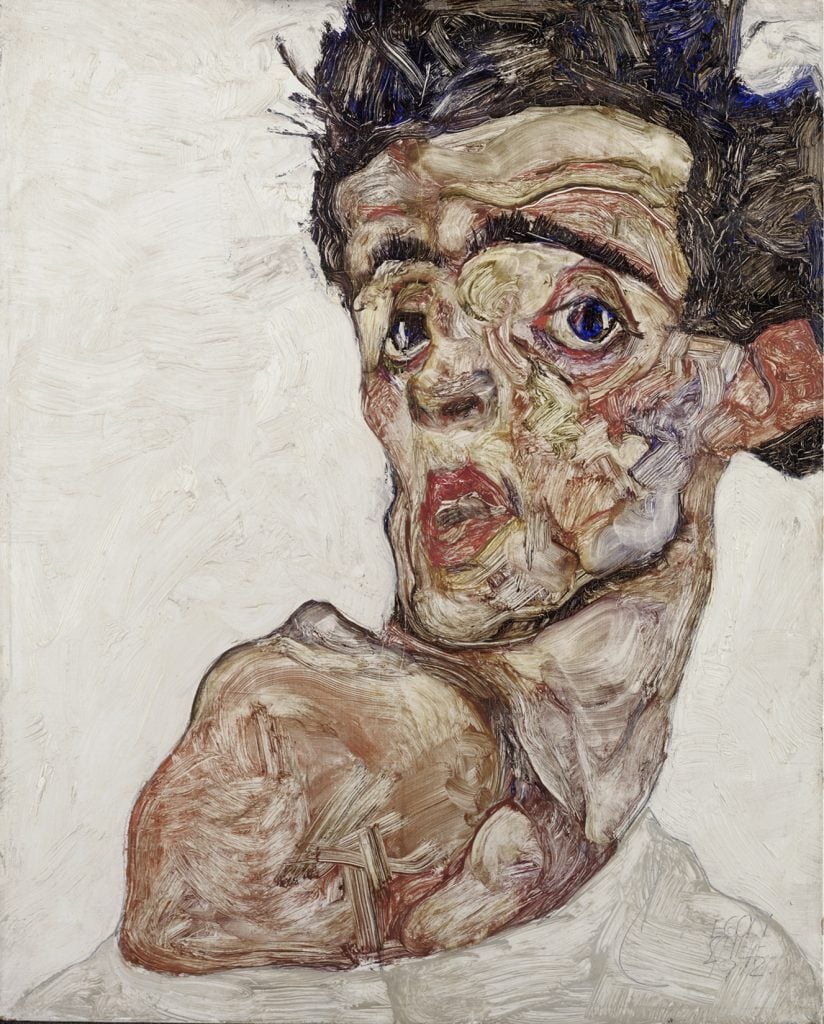
Egon Schiele, Self-Portrait with Bare Shoulder (1912). Courtesy of the Leopold Museum, Vienna.
Galerie St. Etienne will also continue in a limited capacity as an art advisory, “so that we’re not leaving our existing clientele in the lurch,” Kallir said. “But we will not be going out to actively acquire inventory, or participating in art fairs or any of those more outward-looking commercial activities.”
The foundation, however, continue to represent Grandma Moses, as it has since her first show in 1940, as well as Sue Coe, the only living artist on the roster. The gallery’s four-person full-time staff will all stay on at the foundation.
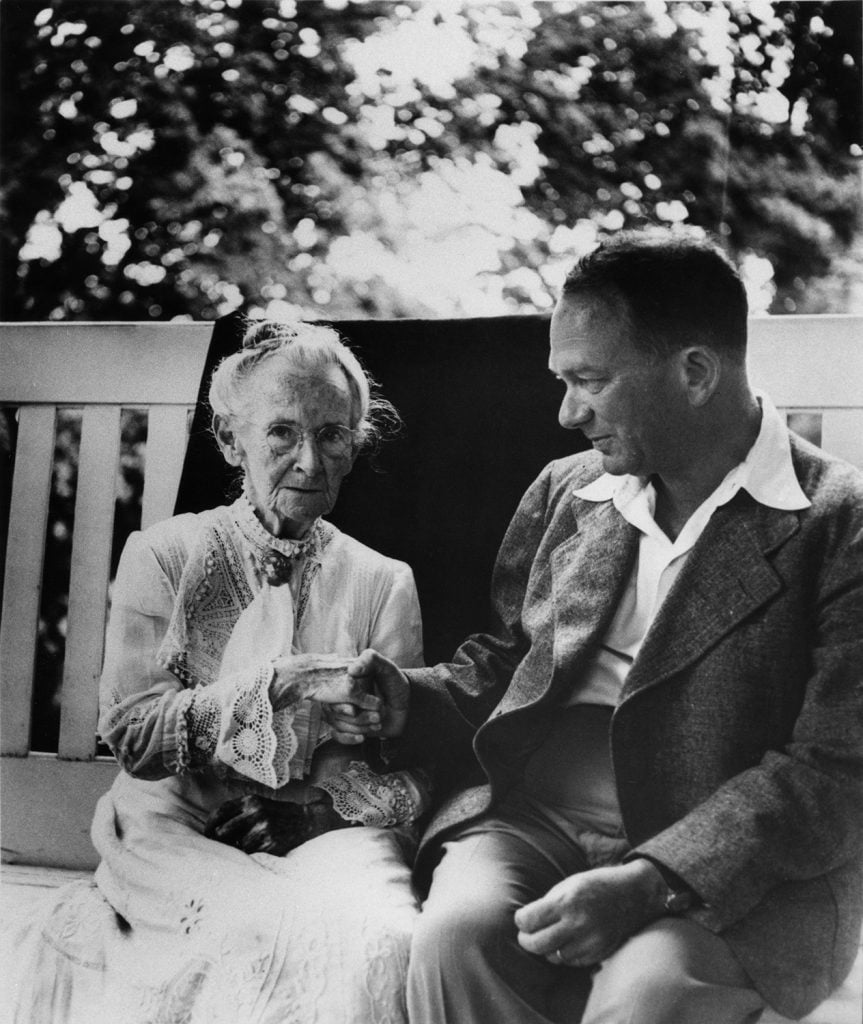
Grandma Moses and Otto Kallir in Eagle Bridge, New York in 1944. Photo courtesy of the Kallir Research Institute, Institute, ©Grandma Moses Properties Co., New York.
“The pandemic has really given us the opportunity to step back a little bit and plan in a way that we perhaps wouldn’t have been able to do if we had been fully engaged with our exhibition program throughout 2020,” Kallir said. “We had always planned our final exhibition to be a Sue Coe show to coincide with the 2020 presidential election, and the way things turned out, that was something of a blockbuster!”
Looking forward, the foundation will focus much of its attention on the ongoing Schiele catalogue digitization, which has already made information about the artist’s oil paintings, prints, and sculptures available online. Next up will be the watercolors and drawings, of which there are close to 3,000.
“Updating and proofreading those entries will be a massive task,” Kallir said. “Beyond that, there are massive questions of provenance, which has been the subject of many restitution claims in recent years.”
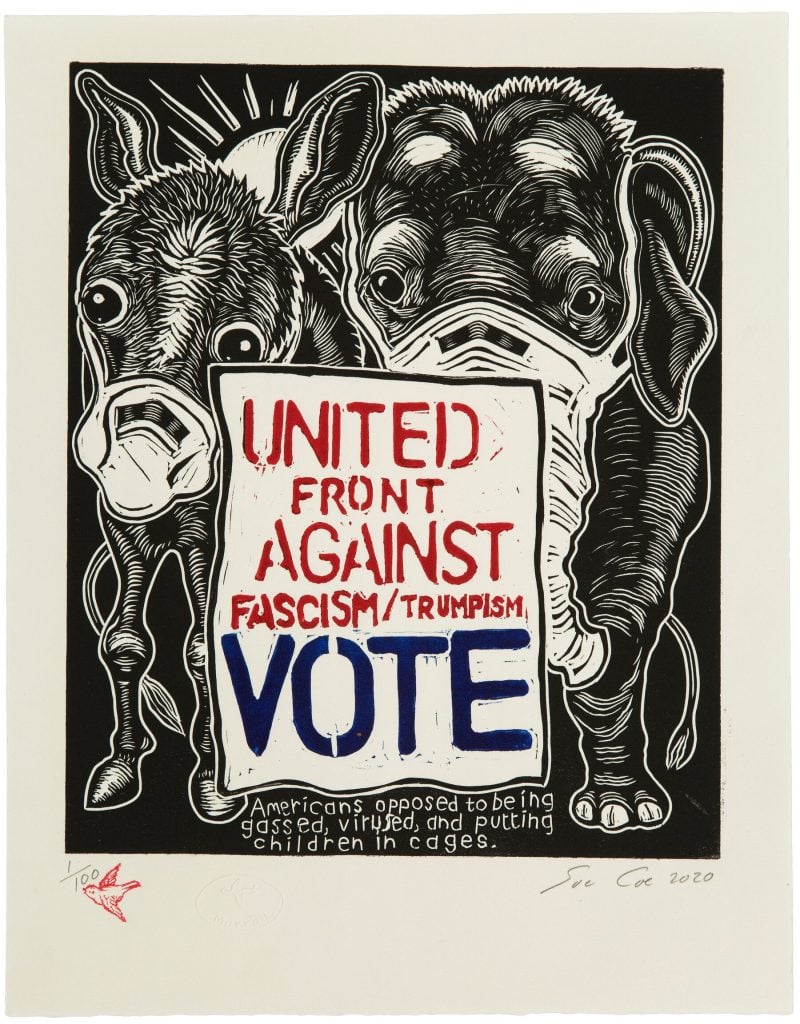
Sue Coe, United Against Fascism (2020). Courtesy of Galerie St. Etienne.
Also in line for the digital catalogue raisonné treatment are Moses and Richard Gerstl. Kallir is currently in talks with the J. Paul Getty Museum in Los Angeles and the Smithsonian’s Archives of American Art in Washington, DC, which are exploring the possibility of acquiring the gallery’s archives.
“The Archives of American Art, I believe, is interested principally in the Grandma Moses archives,” Kallir said. “Then the question is, should we be dividing the material between two institutions?”
The gallery’s records aren’t just interesting from an art-historical perspective. They also represent an older way of doing business in the art world. Until his death in 1978, Otto Kallir ran the gallery with Hildegard Bachert, who he hired as a secretary when she was just a teenager. Bachert worked tirelessly at Galerie St. Etienne until she died in 2019, at age 98.
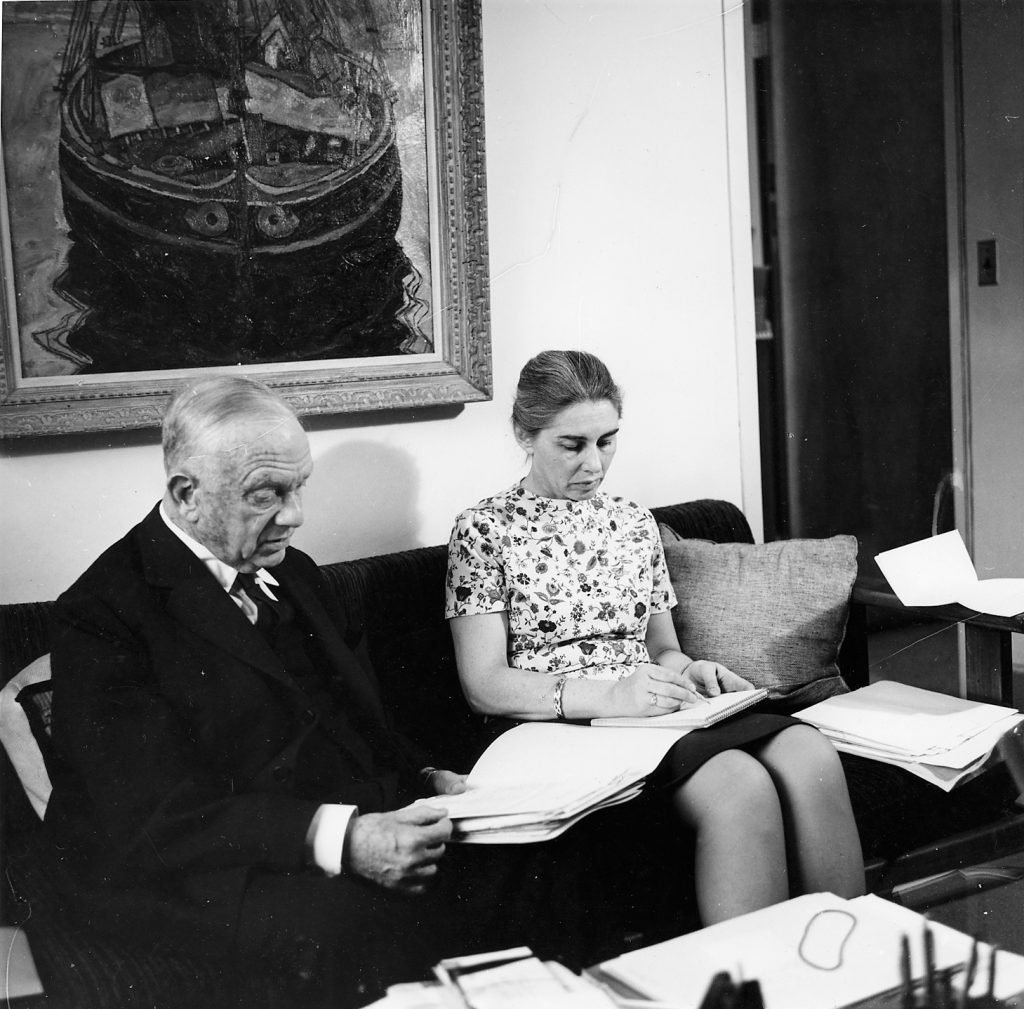
Otto Kallir and Hildegard Bachert at Galerie St. Etienne in 1972. Photo by Helen Post Modley courtesy of the Kallir Research Institute.
“My grandfather, Hildegard, and myself, there wasn’t anything that went on here that we didn’t know about. That gives you the type of encyclopedic knowledge that can form the basis for a catalogue raisonné,” Kallir said.
“You don’t have continuity of representation for an artist anymore—most artists hop around so you don’t have one dealer having that in-depth relationship,” she added. “And as the galleries become larger, you have the work being farmed out… If you have a staff of 50 or 100 and they’re divided between Hong Kong and New York and London, it’s simply not a situation that is conducive to this kind of scholarship.”